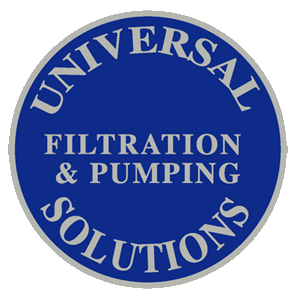Introduction to Filter Press Pilot Testing
1.1 Purpose of Manual
The purpose of this manual is to describe the major tests required for filter press pilot testing. Included are descriptions of sample preparation, bench tests, filter press tests, important safety issues, and basic data interpretation.
Filter press sizing is not discussed in this manual. Please consult with your salesman for sizing assistance.
1.2 Purpose of Testing
The goal of filter press pilot testing is to collect the data required to accurately size filter presses and other ancillary equipment such as pumps.
Typical data collected includes cake solids, cake density, total processing time, slurry feed solids, slurry pH, actual chemical conditioning dosages, operating pressures, and if desired filtrate suspended solids. Depending on the process requirements the total processing time may be further subdivided into steps such as filtration, cake wash, final squeeze, and cake air blow.
1.3 Description of Equipment
The test equipment includes apparatus for determining the chemical conditioning, bench scale filter press testing, and pilot filter press testing as well as basic laboratory equipment needed to conduct the tests such as balances, magnetic stirrers, hot plates, ovens, and pH meters.
This manual assumes one has some familiarity with standard laboratory equipment and techniques.
The most common screening apparatus available to our customers is the Buchner funnel. It is used to determine the overall filterability of the slurry pumping and any chemical conditioning requirements. However, it does not give data suitable for sizing a filter press.
Other screening tests are used. Please consult with your salesman for assistance with the other screening tests.
The pilot filter presses are the HPL300, HPL470, and HPL500. They are “sidebar” filter presses with a manual hydraulic pump. The HPL300 uses 300 mm × 300 mm filter plates. The HPL470 uses 470 mm × 470 mm plates and the HPL500 can use either 470 mm × 470 mm filter plates (using an adapter plate) or 500 mm × 500 mm filter plates. (The 470 mm × 470 mm plate size is more common in the US while the 500 mm × 500 mm is more common in Europe.) Other equipment needed for a test includes pumps, and mixing tanks with mixers.
There are two common filter press configurations: recessed chamber and membrane. All the presses are suitable for recessed chamber testing. However, the HPL300 does not accurately test the cake washing and thus is limited in its membrane testing capability.
1.4 Outline of the Test
Before actually using a filter press, the filterability of the slurry must be evaluated and slurry conditioning requirements must be determined. The screening tests are used to determine the chemical conditioning requirements of the slurry.
The filter press test starts with preparing the slurry as required for the test and preparing the filter press for the test (installing the correct plates and filter cloth). Once the press and sample are ready the slurry is fed to the press and the press is filled. Once the press is full and filtrate is coming out, the stop watch is started and filtrate samples are taken. The test is continued until both the low flow and maximum pressure conditions have been reached for filtration. For a recessed chamber test, the test is ended. For a membrane test, it is continued with the optional cake wash, membrane squeeze, and optional air blow down. Once the test is finished the press is opened, the filter cake is removed, and cake samples are taken. It is important to note how the cake released and the overall surface condition of the filter cloth. Cake release is normally slightly better on a larger press but if there is poor release on the test press the release on the larger press will be poor.
1.5 Scope of Manual
Detailed procedures of each method are described for:
Slurry pretreatment
Standard preliminary laboratory procedures
Bench scale screening test
Pilot scale filter press tests.
It is assumed that the common laboratory equipment (beakers, graduated cylinders, pH paper, spatulas, weigh boats, mixers, etc.) is available for making up solutions, only specific or recommended sizes are noted in the various procedures
The chemical mechanisms and filtration theory are beyond the scope and intent of this manual.
